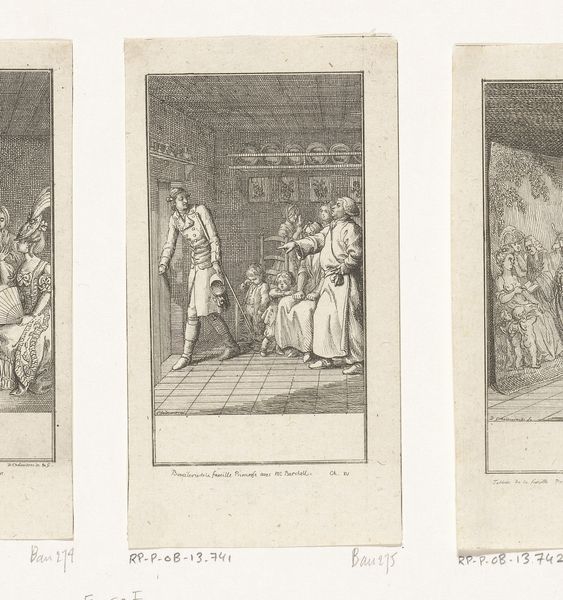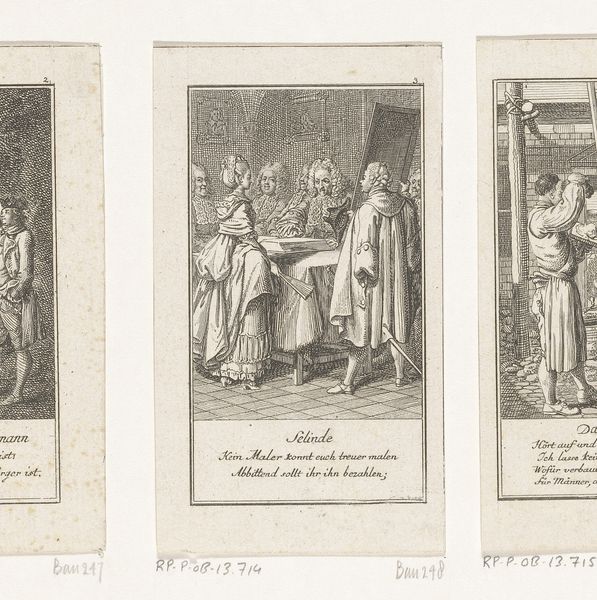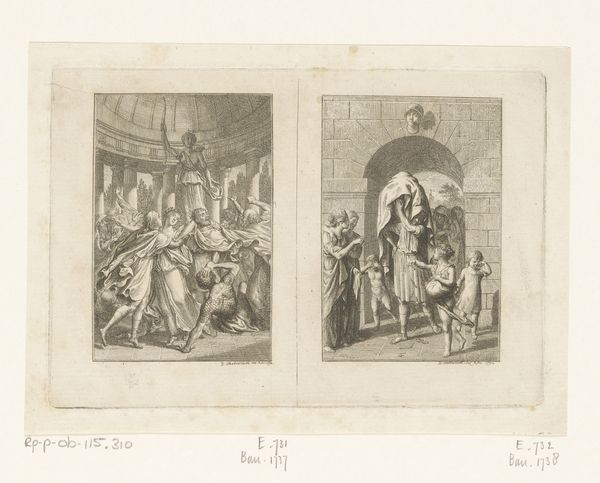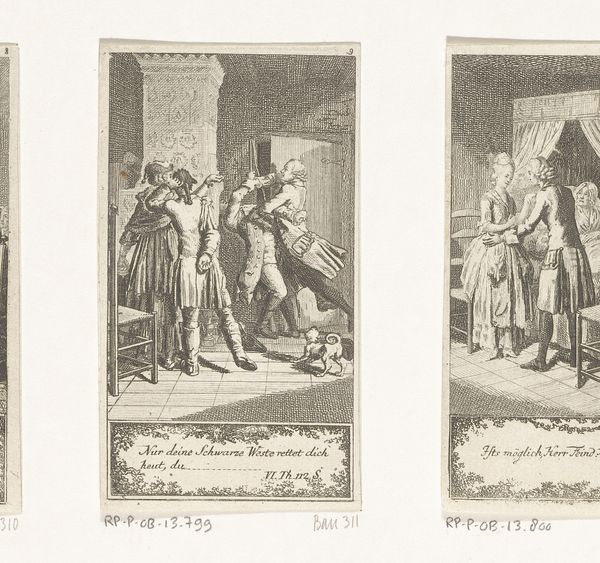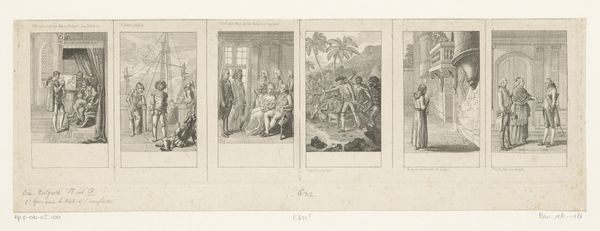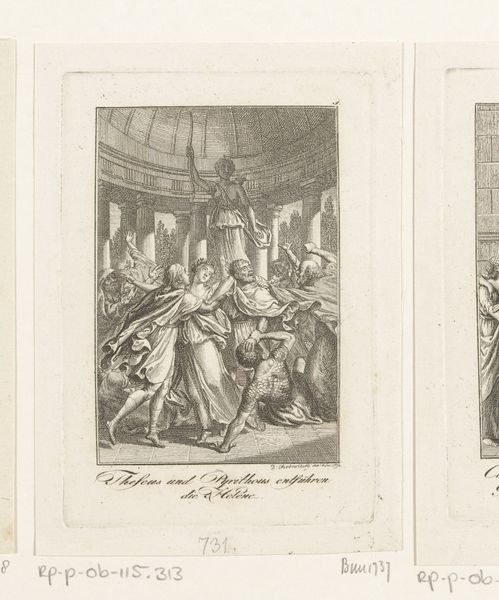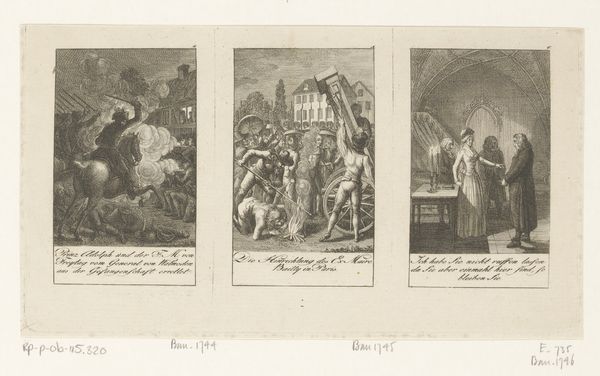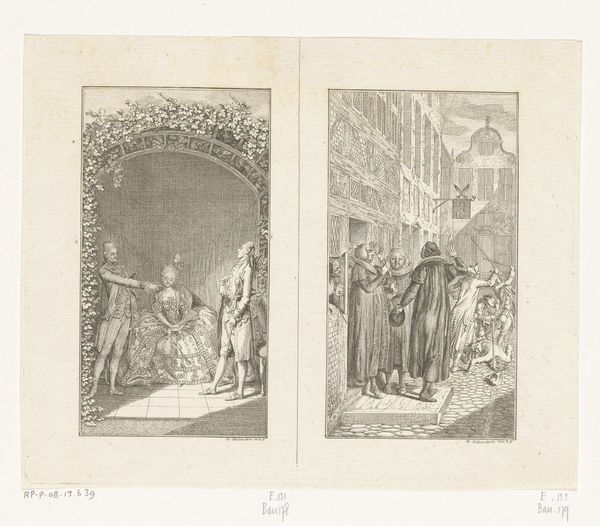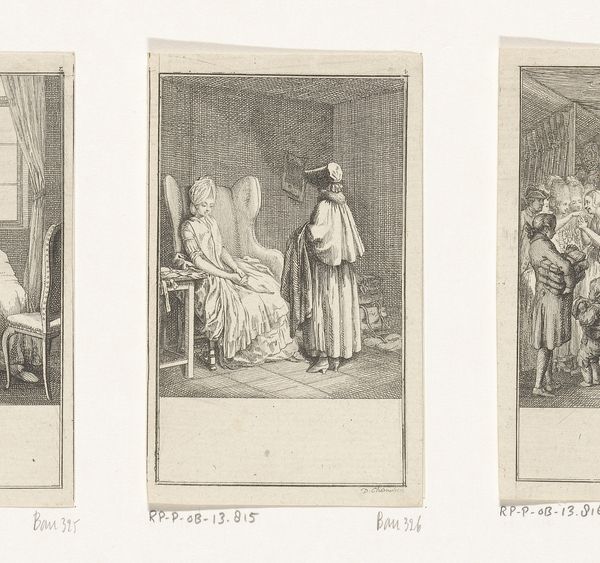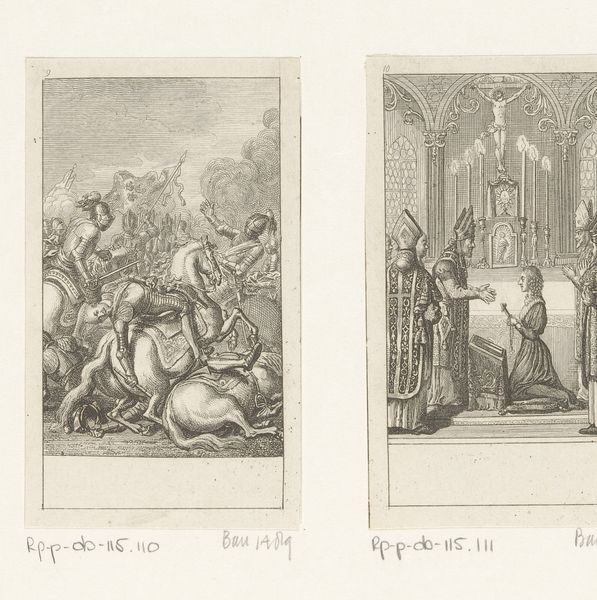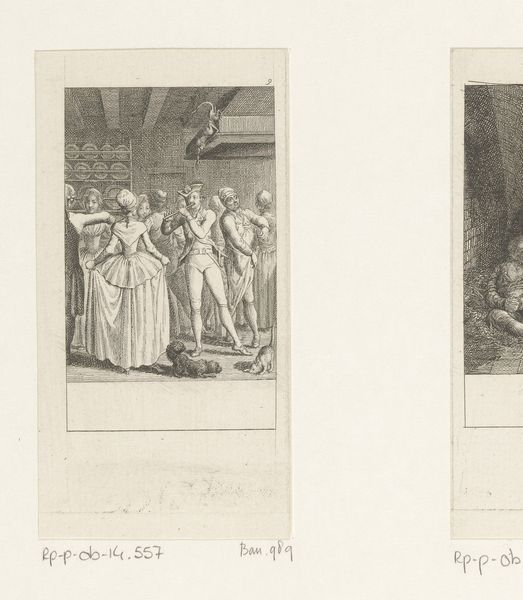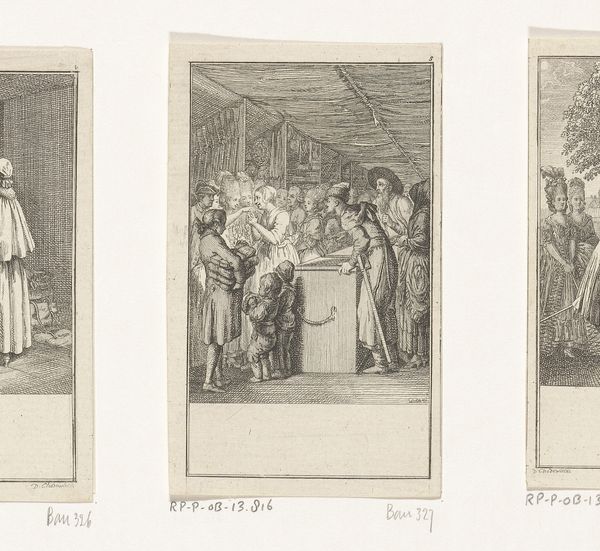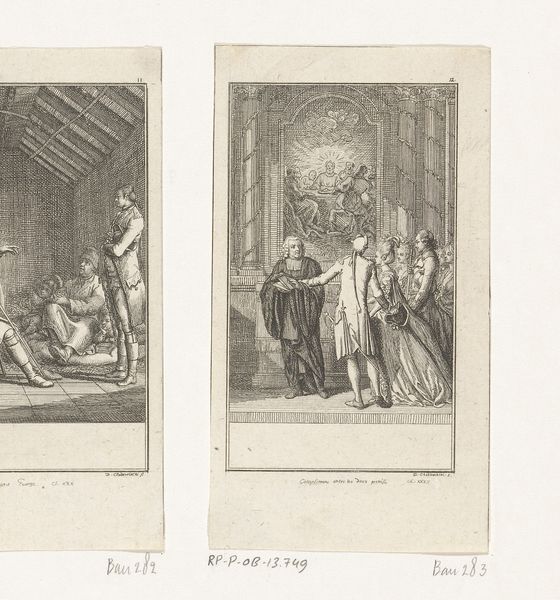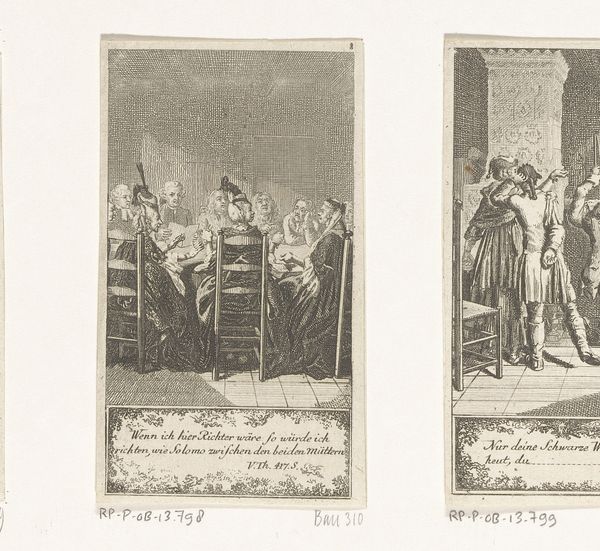
Dimensions: height 93 mm, width 54 mm
Copyright: Rijks Museum: Open Domain
Editor: Here we have "Feind ontmoet een oude vriend," or "The Enemy Meets an Old Friend," an etching by Daniel Nikolaus Chodowiecki from 1776. It's a small print, with finely rendered lines detailing an interior scene. What strikes me most is how it looks like it could be a still from a play - very theatrical. How do you interpret the staging of this encounter? Curator: It’s interesting that you perceive theatricality because Chodowiecki was a master of capturing human interaction with great symbolic density, staging complex dramas within these small prints. Look at the man clutching his face—a visceral expression of shock or shame. What kind of narrative and cultural codes is Chodowiecki encoding? Editor: Well, there are two gentlemen meeting in what seems to be an official or public place; people are around. One man appears distressed, even recoiling, while the other has an arm extended in what might be welcome. I don't know how to tie it all together. Curator: The architecture looms in the background: Gothic arches suggest a sacred space. Consider then, how Chodowiecki situates his players amidst the old cultural forces that still dominated European life. Notice the almost caricatured facial expressions too; they hint at older physiognomic traditions that tied inner character to outer appearance. Do you think those stereotypes resonate today? Editor: Absolutely, though they can be dangerous. It’s a good reminder of how deeply ingrained those ways of seeing remain, especially given the setting. I suppose I see more conflict now and social critique than mere theatre. Curator: Exactly. The enduring power of visual language helps maintain cultural memory but it might also reproduce cultural fault lines. It encourages a certain level of vigilance when we examine works like these. Editor: I learned how important it is to understand not just what's depicted but what those symbols might have meant to the people of the time and to us today. Curator: Precisely! It serves to examine both cultural continuity and rupture within our shared visual narratives.
Comments
No comments
Be the first to comment and join the conversation on the ultimate creative platform.
